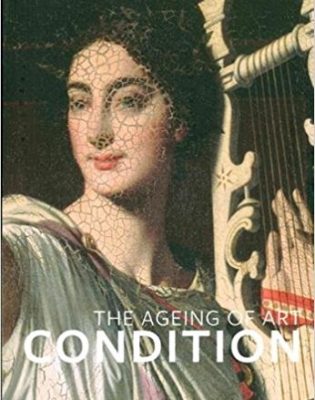Paul Taylor’s Condition: The Ageing of Art provides an invaluable introduction to a topic often overlooked by art historians: how the chemistry of materials collides with the caprices of time, and how this collision affects the appearance of objects. Condition warns of the pitfalls of pursuing art historical theories grounded in visual evidence without first attempting to understand as much as possible any condition issues of the works in question. This timely handbook speaks to the field’s increasing awareness of, and interest in material concerns, which stems in part from pioneering technical research on Netherlandish paintings that has bridged art history and conservation.
More specifically, Condition is a book for students and scholars of early modern European painting, drawing almost exclusively on the London National Gallery for examples. As the curator of the photographic collection at the Warburg Institute and as a scholar of seventeenth-century Dutch art who has also written extensively on Renaissance art and historiography, Taylor focuses on his own area of expertise. He models the method he advocates by relying on a familiar, public collection. Significantly, the NG has already completed and published extensive technical and condition research for works in its collection, a project undertaken by a growing number of other European and American museums. Recent focus shows about the restoration of Jan Van Scorel’s Baptism of Christ (Frans Hals Museum, 2015-2016) and about Rembrandt’s Susannah and the Elders (Berlin, 2015; with extensive repainting by Joshua Reynolds) are excellent examples of museum exhibitions centered on technical discoveries made during the restoration process
Condition begins with the fundamental “Terms and Technologies” of materials and conservation. The chapter combines basic definitions of paints, grounds, and supports and introduces technical tools, such as infrared and x-ray. In the book’s second chapter, on “Losses,” Taylor suggests that the paltry survival rates of art are perhaps due in large part to condition – not only to the usual suspects (war, fire, desirable materials, ideology). Addressing the more subtle and pernicious issue of paint loss within an existing work, Taylor muses on the philosophical dimensions of conservation options: “One cannot do nothing, because to do nothing is already to make a decision about what the work of art is going to look like (79).” While Condition can be used as a reference manual, Taylor tends to weave his main themes, especially conservation history and theory, throughout the chapters, unifying the book.
The next three chapters discuss how surface materials necessarily change over time. In a chapter on “Cracking and Flaking,” Taylor strikes a playful tone to introduce a dry subject, often avoided by art historical scholarship, by pointing out that we would not likewise ignore a friend or family member’s change “to develop a fine mesh of cracks over her or his face (92).” The chapter includes a brief but fascinating section on fake crackling, introduced by way the of prolific and controversial Belgian restorer and copyist Joseph Van der Veken (1872-1964). The problem posed by copies and forgeries could have merited its own chapter. Next, the volatility of “Impermanent Pigments,” especially reds and blues, is introduced, followed by an overview of “Darkening,” of both paint layers and varnishes. This book also inventories the many types and uses of varnish applied to European paintings – just one more reminder of how much condition issues are shaped by the specificities and variables of materials, technique, environment, and treatment history, making generalizations difficult.
Taylor’s liberal quotations from period sources enliven the chapters and add an important historical dimension to contemporary conservation practices. We learn that in the early modern era, paintings were rubbed with ash and water (producing lye), or with soap (lye mixed with lard), or, memorably, with stale urine or beer. While this information provides entertaining reading, Taylor also uses these same sources to underscore the destruction wrought by the over-cleaning of paintings. (For the record, lye is much worse than urine!) Expressions of derision and despair over conservation attempts gone wrong echo over the centuries, from Pliny the Elder on a painting by Aristides whose “beauty has perished” due to a botched cleaning, to Karel van Mander on the “idiot” whose inept work destroyed a predella for Van Eyck’s Ghent Altarpiece (196).
The larger point is that our own time’s practices are historically contingent and subject to revision, as Taylor addresses in the final chapter on conservation practices, simply titled “Cleaning.” In the wake of the positivist hubris of early twentieth-century restorers, present-day conservators have undertaken a “change in cleaning practices, which now err on the side of caution (207).” Current methods include often leaving a thin layer of the old varnish intact in a cleaning to avoid overcleaning and accidentally removing subtle finishing glazes. While striving for their interventions to be reversible, conservators today additionally aim for transparency. This clarity is exemplified by the PR campaign around the current high-profile conservation of the Ghent Altarpiece by KIK-IRPA, which is literally being undertaken in a glass room visible to the public, at the Museum of Fine Arts in Ghent (http://www.kikirpa.be/EN/249/0/Restoration+of+the+Ghent+Altarpiece.htm).
His clear focus on European paintings makes Taylor’s occasional interspersed references to condition issues for Chinese paintings or Japanese prints superfluous. They seem to reflect the author’s own curiosities more than serving as a meaningful expansion of the study into a consideration of condition issues for non-European art. Taylor’s vibrant intellectual interest in the history of conservation helps transform this introduction into a compelling narrative, but it can also mean that Condition sometimes buries key terms and insights. This minor obscurity could have been partially remedied by a glossary or list of “further reading.” But these small criticisms pale before a surprisingly lively introduction to a subject of critical importance for all students of artworks.
Anna-Claire Stinebring
University of Pennsylvania
